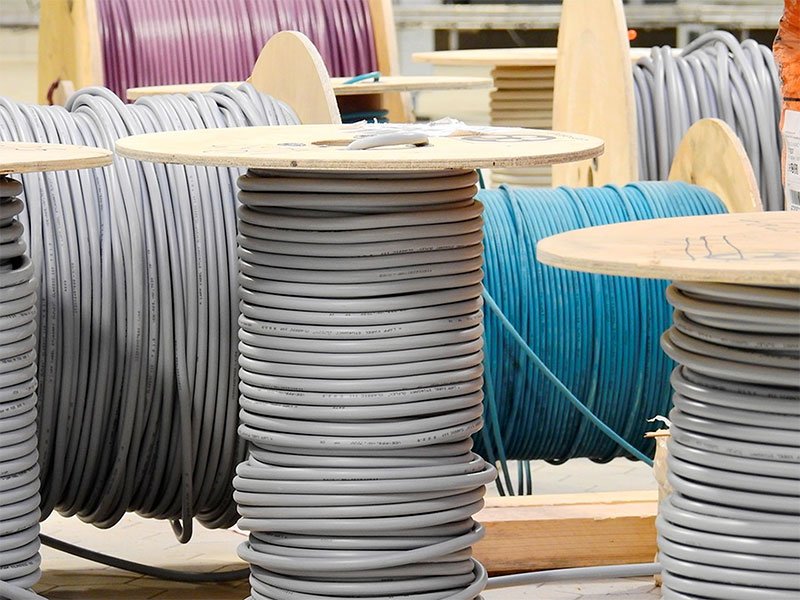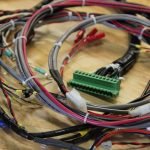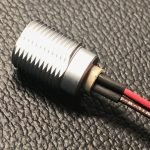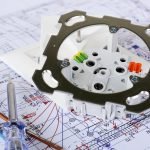Any product that is electrically powered can likely make use of a wiring harness. Also called a cable harness, cable assembly or wiring assembly, a wiring harness is a group of wires that typically starts and terminates with a type of connector specific to its function. Although products in a wide range of industries use these devices, the wire harness assembly process is generally the same.
3 Steps in Wire Harness Assembly
Whether a wiring harness will have two wires or dozens of wires, the wire harness assembly process will typically follow the steps below.
- Wire marking and cutting. The wires in a wiring harness must have the precise length called for in the design. Consequently, this first step in the process is critical. Assemblers measure, mark and cut every wire.
- Wire layout. In this step, an assembler lays the wires out as directed by the wiring harness design. Once the wires are organized, the assembler may hold the wires in position with a cable tie or tape.
- Wire termination. Every wire in a wiring harness must be terminated. Typically an assembler attaches each wire to a connector. They do this by stripping the insulation away, crimping contacts onto the end of the wire with automated or handheld crimpers and inserting the wire into the connector.
Wiring Harness Testing
At each step in the wire harness assembly process, assemblers perform quality control checks on the procedures they perform. However, wire harness manufacturers also perform post-production testing. At Rapport, this testing is extensive. It involves everything from visual inspection to an array of assessments using digital testing tools. Due to our strict in-process quality assurance requirements, it is rare that one of our harnesses does not pass each of our post production tests. However, if a wire harness does fail to meet a requirement, it is carefully reworked or scrapped if appropriate.
Once a harness has passed our tests, an assembler performs a few final operations on it. This can include applying shrink tubing and putting protective caps on connectors if appropriate. Then the harness is ready for packaging and shipment.
A “Personal” Approach to Wire Harness Assembly
A unique aspect of wire harness assembly at Rapport is that generally speaking, the same assembler performs all the required operations on a particular batch of harnesses. In other words, they take the wiring harnesses from one station to the next and complete all the work on the assembly. We find that this personalized attention assemblers give to a group of harnesses results in extremely high-quality work.
Standard and Customized Wiring Harnesses
At Rapport, we produce cable and wiring harnesses using standard materials for general use, but we also offer customization services. For example, we can stripe your PVC, Teflon®, nylon, or irradiated material with 1, 2 or 3 stripes in your choice of color. In addition, we can strip, cut, twist or dye wire to meet your requirements. To complete your order, we offer labeling services using laser-printed sticky labels or heat shrink tubing and bind your product with zip ties or tie wraps as requested.
And, whether you are ordering another set of standard wire harnesses or working with us to produce a brand new customized assembly, you get the same attentive service and unwavering quality standards.
Our full-service facility outside of Denver can create your wire harness assembly from prototype to final packaging, quickly and cost-effectively. Contact Rapport, Inc. today to get answers to all of your questions about cable and wire harnesses!





